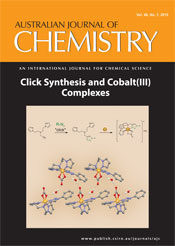
Australian Journal of Chemistry
Volume 68 Number 7 2015
CH14547N,N-Dialkyl-N′-Chlorosulfonyl Chloroformamidines in Heterocyclic Synthesis. Part XI. Some Substitution Reactions of Pyrazolo[1,5-b][1,2,4,6]thiatriazine 1,1-Dioxides
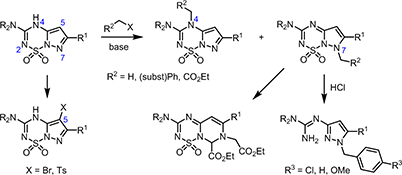
The pyrazolo[1,5-b][1,2,4,6]thiatriazine template possesses four nucleophilic sites, N2, N4, C5, and N7. Alkylation occurred predominantly at N4 and N7. The N-7 alkylation products from α-halo esters underwent pyrazole ring expansion, affording pyrimido[1,6-b][1,2,4,6]thiatriazine derivatives. Bromination and tosylation afforded unstable C5-substituted derivatives. Treatment of N7-benzylated pyrazolo[1,5-b][1,2,4,6]thiatriazines with acid caused extrusion of SO2 affording pyrazolo-guanidines.
CH14502The Synthesis, Characterisation, Photophysical and Thermal Properties, and Photovoltaic Performance of 7-Coumarinoxy-4-Methyltetrasubstituted Metallophthalocyanines
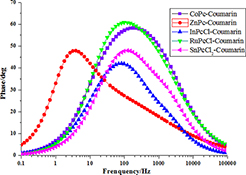
2(3),9(10),16(17),23(24)-Tetrakis(7-coumarinoxy-4-methyl)-phthalocyaninatozinc(ii) (ZnPc-Coumarin) has a long electron lifetime, indicative of an effective suppression of the back reaction between the injected electrons and the electrolyte, thus resulting in a great open-circuit potential due to a reduced charge recombination rate.
CH14529Synthesis, Electrochemical, and Thermal Properties of [3]Ferrocenophane-Containing Chalcone Derivatives
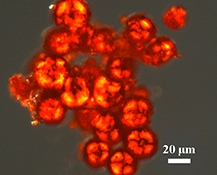
Two series of [3]ferrocenophane-containing chalcone derivatives have been synthesized and characterized. These compounds exhibited good absorption and electrochemical properties. The thermal behaviours of the prepared compounds were also studied.
CH14542Study of Di- and Polyamines as Activators in the Hot Potash Process for CO2 Capture
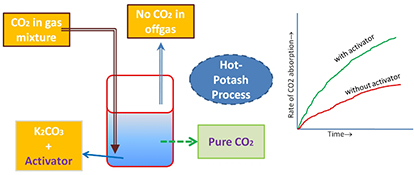
This is the graphical representation of absorption of CO2 in the Hot Potash Process. An activator is used in this process along with aqueous K2CO3 for CO2 absorption. Rate of absorption is increased with the addition of an activator. All activators are organic amines. This study reports the trial of different amine activators.
CH14461A Facile Synthesis of Ion Imprinted Mesoporous Silica Adsorbents by a Co-Condensation Pathway and Application in a Fixed-Bed Column Study for Lead Removal
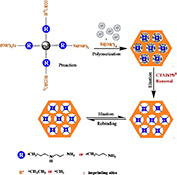
Highly selective lead ion imprinted mesoporous silica adsorbents (PbII-IMS) were prepared through a co-condensation pathway with 3-(γ-aminoethylamino)propyltrimethoxysilane (PbII-IMS-NN) and 3-aminepropyltriethoxysilyl (PbII-IMS-N) as monomers. It was found that the synthesised adsorbents presented a highly ordered mesoporous structure. PbII-IMS-NN showed a higher adsorption capacity and better recognition and binding affinity towards the target lead ions than PbII-IMS-N.
CH14606Phosphatidylcholine with cis-9,trans-11 and trans-10,cis-12 Conjugated Linoleic Acid Isomers: Synthesis and Cytotoxic Studies
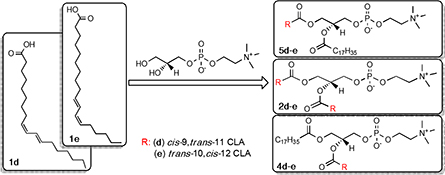
Conjugated linoleic acid (CLA) has anticancer properties, and can be used in the synthesis of phosphatidylcholine, which has potential use as a lipid prodrug. The results revealed that there are differences in the activity between phosphatidylcholine with cis-9,trans-11 and trans-10,cis-12 CLA acyl groups. Moreover, PC-CLA exhibited lower cytotoxicity against non-cancer cells than free CLA isomers.
CH14561Various pH-Dependent Copper(II) Coordination Architectures Constructed from N,N′-Di(3-pyridyl)succinamide and Two Different Dicarboxylates
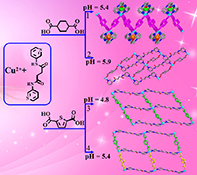
Four new 2D copper(ii) metal–organic networks have been hydrothermally synthesized under different pH conditions. The photoluminescence properties, electrochemical behaviour, and photocatalytic activity of complexes 1–4 were studied.
CH14555A Comparison of the Lewis Basicity of Diamidocarbenes and Diaminocarbenes
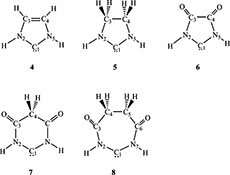
In this study, the M06-2X DFT functional was used to investigate the efficiencies of various carbenes in inducing hydrogen abstraction in H3B because of formation of a Lewis acid–base pair with H3B. The DFT results indicate that a diamidocarbene is more efficient in reducing the B–H bond energy than a diaminocarbene.
CH14525Synthesis and Catalytic Applications of Chemically Grafted SiH-Functionalized Tripodal Ti-POSS Complexes in Crosslinked Hyperbranched Poly(siloxysilane)
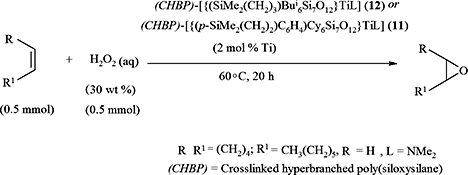
The crosslinked hyperbranched poly(siloxysilane)-grafted [{(p-HSiMe2(CH2)2C6H4)(c-C6H11)6Si7O12}Ti(NMe2)] (11), and crosslinked hyperbranched poly(siloxysilane)-grafted [{(HSiMe2(CH2)3)(i-C4H9)6Si7O12}Ti(NMe2)] (12) display high activity, excellent H2O2 efficiency (≥97 %) and epoxide selectivity (≥98 %), and are highly recyclable with retained activity, epoxide selectivity, and H2O2 efficiency in cyclohexene and 1-octene epoxidation with aqueous H2O2.
CH14620Phase Transfer Catalysis Extends The Scope of The Algar–Flynn–Oyamada Synthesis of 3-Hydroxyflavones

Phase transfer catalysis improves the yields and expands the scope of the Algar–Flynn–Oyamada reaction of a series of 4-benzyloxy-2-hydroxy chalcones.
CH14602A Compact Microcontrolled Microfluidic System for Photometric Determination of Phosphate in Natural Water Samples
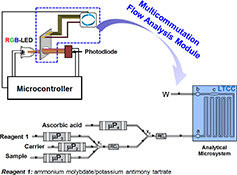
A novel, portable, and environmentally friendly automated method for phosphate determination in natural water samples was developed based on a microsystem based on green tapes coupled to a light-emitting diode (LED)–photometer and multicommutation flow analysis (MCFA).
CH14618Bi-Nuclear Metal Complexes of 2,6-Bis(1,4,7-triazacyclonon-1-yl-methylene)pyridine with Zinc(II), Copper(II), and Nickel(II)
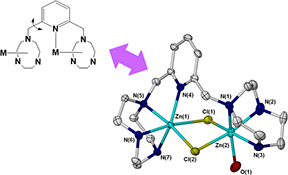
The copper(ii), nickel(ii), and zinc(ii) complexes of the 2,6-bis(1,4,7-triazacyclonon-1-ylmethyl)pyridine ligand, Lpyx, are bi-nuclear, with unsymmetrical binding to the two metal centres. These crystal structures illustrate the potential for tailoring this class of ligands to act as artificial receptors for two-point binding to peptide tags, thus widening the scope for purification of recombinant proteins using IMAC procedures.
CH14551Regioselective Nitration of m-Xylene Catalyzed by Zeolite Catalyst

Nitration with nitric acid and acetic anhydride via acetyl nitrate as nitrating species is efficient with the substrate m-xylene as solvent. Zeolite Hβ with an SiO2/Al2O3 ratio of 500 was found to be the most active of the catalysts tried both in yield and regioselectivity in the nitration of m-xylene.
CH14565Increasing Rutile Phase Amount in Chromium-Doped Titania by Simple Stirring Approach for Photodegradation of Methylene Blue under Visible Light
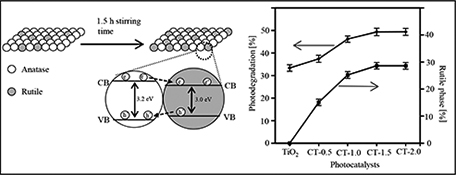
The amount of rutile phase in chromium-doped titania photocatalyst was controlled by varying stirring time during a sol–gel synthesis process. The percentage of rutile phase increased from 15.1 % to 28.6 % when the stirring time was prolonged from 0.5 to 1.5 h, leading to enhanced photocatalytic activity in photodegradation of methylene blue.
CH14517Water-Soluble Poly(ε-caprolactone)-Paclitaxel Prodrugs Toward an Efficient Drug Delivery System
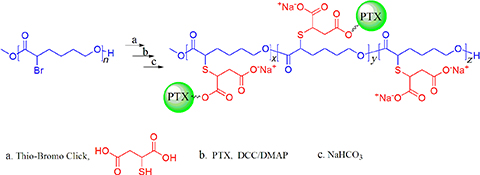
A series of water-soluble P(α-C2CL)-paclitaxel prodrugs with high drug contents (up to 41.4 wt-%) was prepared by esterification. Methyl tetrazolium (MTT) assays showed that P(α-C2CL)-paclitaxel prodrugs exhibited high antitumour effect on A549 and MCF-7 cells. These prodrugs have appeared as a highly versatile and potent platform for cancer therapy.
CH14562Synthesis, Structural Characterisation, and Spectroscopic Properties of Copper(I) Complexes and their Applications to Dye-Sensitised Solar Cells
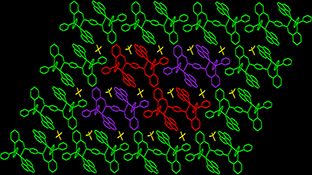
Two copper (i) complexes, [Cu2(pbb)(2,2′-bipyridine)2] (BF4)2 (1) and [Cu2(pbb)(phen)2] (BF4)2 (2) have been prepared and characterized. Each complex contains a supramolecular network, formed by C–H···π and π···π interactions.
CH14501Synthesis and Characterization of SmIII and EuIII Coordination Compounds of 3-(2-Pyridyl)-1-pyrazolyl Acetic Acid
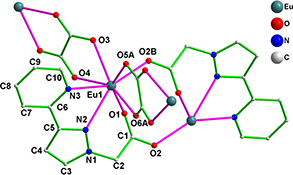
Two novel polymers based on Hpypza and SmIII/EuIII were prepared. The mechanism for the oxalate formation was discussed. The luminescence properties of 1 and 2 were investigated at room temperature in the solid state.
CH14700Hybrid Pyrazolyl-1,2,3-Triazolyl Tripodal Tetraamine Ligands: Click Synthesis and Cobalt(III) Complexes

A family of mono-, bis-, and tris-tripodal tripodal tetraamine ligand scaffolds incorporating pyrazolyl and 1,2,3-triazolyl donor arms have been synthesized in modest-to-excellent yields using the copper(i)-catalyzed azide–alkyne cycloaddition (CuAAC) reaction. The coordination chemistry of the ligands with cobalt(iii) ions has been studied, and cobalt(iii) carbonato complexes of the ligands have been isolated and characterized spectroscopically and crystallographically.
CH146433D Synthetic Soft Tissue as a Novel Anti-Biofilm Assay for Drug Screening
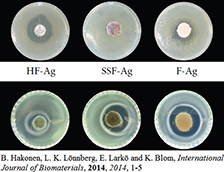
Current standard antibiotic screening protocols lack a reliable in vitro method to assess antimicrobial susceptibility, largely due to lack of comparability with the in vivo environment of microbial biofilm infections. These limitations can be addressed by replicating the in vivo substratum by utilising 3D synthetic soft tissue, a readily synthesised substratum that emulates chronic wound infections.



